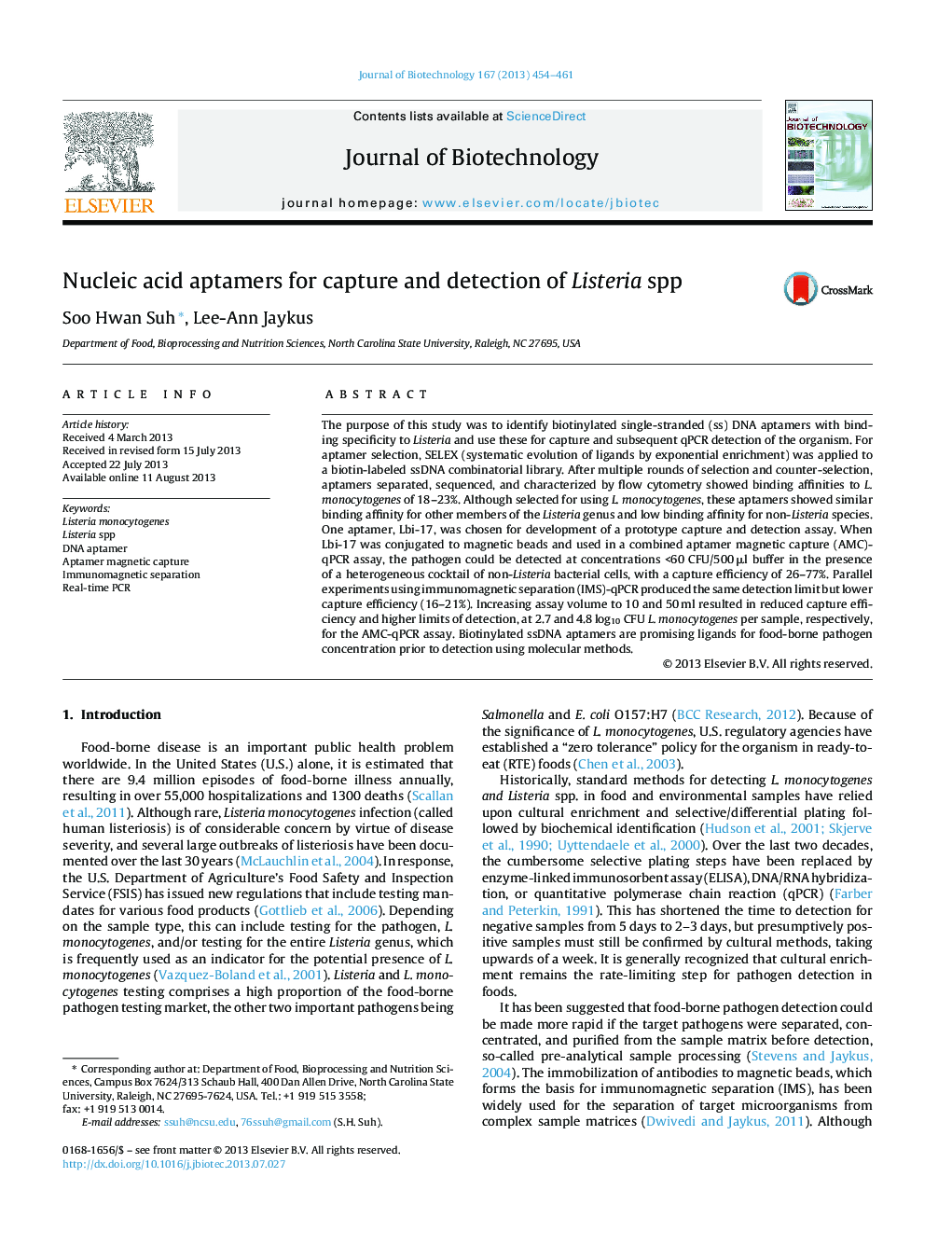| Article ID | Journal | Published Year | Pages | File Type |
|---|---|---|---|---|
| 6491789 | Journal of Biotechnology | 2013 | 8 Pages |
Abstract
The purpose of this study was to identify biotinylated single-stranded (ss) DNA aptamers with binding specificity to Listeria and use these for capture and subsequent qPCR detection of the organism. For aptamer selection, SELEX (systematic evolution of ligands by exponential enrichment) was applied to a biotin-labeled ssDNA combinatorial library. After multiple rounds of selection and counter-selection, aptamers separated, sequenced, and characterized by flow cytometry showed binding affinities to L. monocytogenes of 18-23%. Although selected for using L. monocytogenes, these aptamers showed similar binding affinity for other members of the Listeria genus and low binding affinity for non-Listeria species. One aptamer, Lbi-17, was chosen for development of a prototype capture and detection assay. When Lbi-17 was conjugated to magnetic beads and used in a combined aptamer magnetic capture (AMC)-qPCR assay, the pathogen could be detected at concentrations <60 CFU/500 μl buffer in the presence of a heterogeneous cocktail of non-Listeria bacterial cells, with a capture efficiency of 26-77%. Parallel experiments using immunomagnetic separation (IMS)-qPCR produced the same detection limit but lower capture efficiency (16-21%). Increasing assay volume to 10 and 50 ml resulted in reduced capture efficiency and higher limits of detection, at 2.7 and 4.8 log10 CFU L. monocytogenes per sample, respectively, for the AMC-qPCR assay. Biotinylated ssDNA aptamers are promising ligands for food-borne pathogen concentration prior to detection using molecular methods.
Related Topics
Physical Sciences and Engineering
Chemical Engineering
Bioengineering
Authors
Soo Hwan Suh, Lee-Ann Jaykus,
